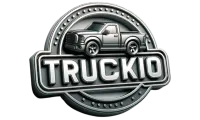Are you wondering if you can remove your tonneau cover? Tonneau covers can indeed be removed, giving you the freedom to customize your truck bed to your liking.
But how do you remove them? What are the benefits and considerations? We will guide you through the process and explore the advantages and disadvantages of removing tonneau covers.
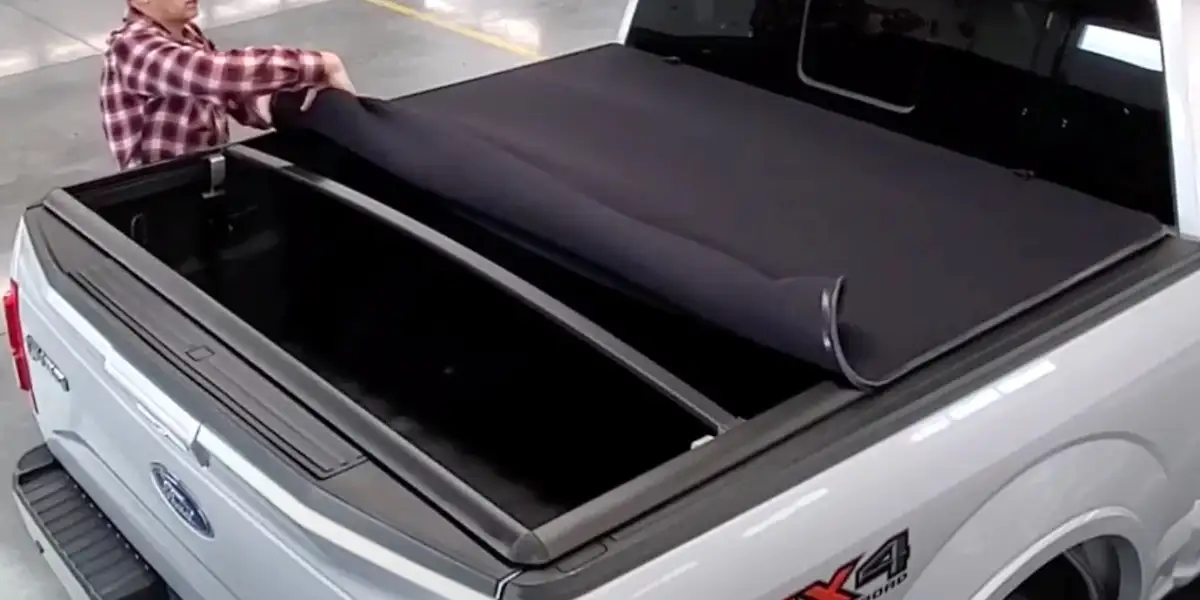
Can Tonneau Covers Be Removed?
Yes, tonneau covers can be removed. To remove a tonneau cover, locate and remove the mounting hardware inside the truck bed. Then, lift the cover off the truck bed and store it in a safe place. Use lubricant if needed and ask for help if necessary. Store the cover in a clean, dry place.
Types of Tonneau Covers and Their Removal Methods
Roll-up tonneau covers
To remove a roll-up tonneau cover, simply unroll it and remove it from the canister at the front of the truck bed.
If the cover is difficult to unroll, you may need a lubricant. Once the cover is removed, you can store it safely.
Tri-fold tonneau covers
To remove a tri-fold tonneau cover, simply fold it up and remove it from the truck bed.
If the cover is difficult to fold up, you may need to ask for help. Once the cover is removed, you can store it in a safe place.
Hard tonneau covers
Some hard tonneau covers may have a release mechanism that allows them to be removed for access to the truck bed.
If your hard tonneau cover does not have a release mechanism, you may need to remove the screws or bolts that hold it in place.
Once the screws or bolts are removed, you can lift the cover off the truck bed. Be careful not to damage the cover or the truck bed.
Soft tonneau covers
To remove a soft tonneau cover, simply unfasten the straps or clips that hold it in place.
Once the straps or clips are unfastened, you can remove the cover from the truck bed. Be careful not to damage the cover or the truck bed.
Note
The removal method for a tonneau cover will vary depending on your cover type. If you have trouble removing the cover, you may need to use a lubricant.
If the cover is difficult to lift, you may need to ask for help. Be sure to store the cover in a clean, dry place.
11 Factors to Consider Before Removing a Tonneau Cover
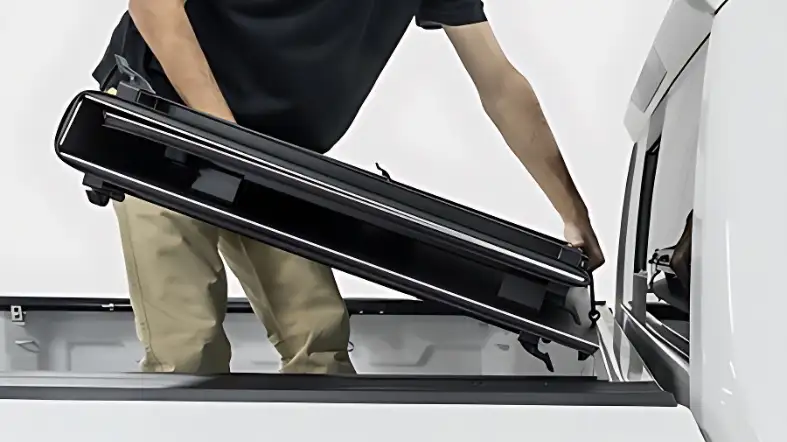
Sure, here are 7 factors to consider before removing a tonneau cover, with details for each factor:
Purpose of tonneau cover
Consider the purpose of your tonneau cover. If it is for security, leave it on when you are not using your truck.
If it is for weather protection, leave it on when you are driving in the rain or snow.
Type of tonneau cover
Your type of tonneau cover will affect how easy it is to remove. Roll-up tonneau covers are the easiest to remove, followed by tri-fold and hard tonneau covers.
Soft tonneau covers can be difficult to remove, especially if they are wet or dirty.
Climate
If you live in a cold climate, leave your tonneau cover on during the winter to protect your cargo from the elements.
If you live in a hot climate, remove your tonneau cover during the summer to allow for better ventilation.
Truck bed contents
If you have valuable cargo in your truck bed, leave your tonneau cover on to protect it from theft.
Remove your tonneau cover if you do not have valuable cargo in your truck bed to give you more space.
Frequency of use
If you use your truck bed frequently, leave your tonneau cover off to make it easier to access your cargo.
If you do not use your truck bed frequently, you may want to leave your tonneau cover on to protect your cargo from the elements.
Ease of removal
Consider how easy it is to remove your tonneau cover. You may not want to remove it often if it is difficult to remove. If it is easy to remove, you should remove it more often.
Appearance
Consider your truck’s appearance with and without the tonneau cover. If you like the look of your truck with the tonneau cover on, leave it on.
If you prefer the look of your truck with the tonneau covers off, remove it.
Hauling Requirements
Determine if you need to transport large or tall items that won’t fit with the tonneau cover installed. Removing it can provide the necessary space.
Storage Space
Ensure you have adequate space to store the tonneau cover safely when it’s not in use. Consider whether you can store it securely and protect it from damage.
Installation Difficulty
Understand the complexity of removing and reinstalling the tonneau cover. Some covers are easier to remove than others, so assess your comfort level with the process.
Security
Assess the security needs of your truck bed. Consider whether removing the tonneau cover might compromise the safety of your belongings.
Step-by-Step Guide: How to Remove a Tonneau Cover
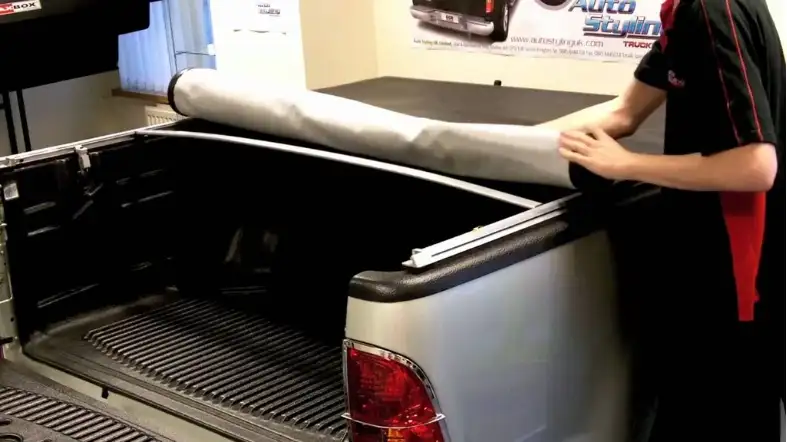
Prepare the Tools
Gather the necessary tools, such as a screwdriver or wrench, and lubricant (if needed).
Locate the Mounting Hardware
Examine the inside of the truck bed to find the mounting hardware. It could be screws, bolts, clips, or other fastening mechanisms.
Remove the Mounting Hardware
Using the appropriate tool, loosen and remove the mounting hardware one piece at a time. Take caution not to damage the truck bed or cover.
Release the Tension
If the tonneau cover has tension or locking mechanisms, follow the manufacturer’s instructions to release it before attempting to lift or remove the cover.
Lift the Cover
With the mounting hardware removed and tension released, carefully lift the tonneau cover off the truck bed.
Pay attention to its weight and size to avoid any strain or accidents.
Store the Cover
Find a safe and clean place to store the tonneau cover temporarily. It could be a designated storage area or a storage bag specifically designed for tonneau covers.
Secure the Truck Bed (optional)
If you’re not planning to use the tonneau cover for an extended period or permanently, consider securing the truck bed using bed rail caps or other accessories.
Comparison: Leaving Tonneau Cover vs. Removing Tonneau Cover
| Feature | Leaving Tonneau Cover On | Removing Tonneau Cover |
|---|---|---|
| Security | Provides additional security against theft | Less secure, easier for thieves to access your cargo |
| Weather protection | Protects your cargo from rain, snow, and sun | Cargo is exposed to the elements |
| Access | Easy access to your cargo | Limited access to your cargo |
| Appearance | Improves the look of your truck | It does not affect the look of your truck |
| Noise reduction | Reduces wind noise while driving | More wind noise while driving |
| Fuel efficiency | May improve fuel efficiency | It may reduce fuel efficiency |
| Price | More expensive | Less expensive |
Advantages of Removing Tonneau Covers
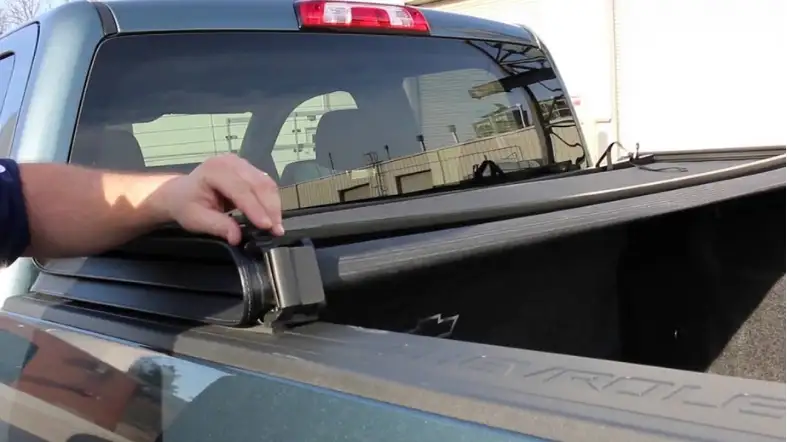
Increased Cargo Space
By removing the tonneau cover, you can gain access to the full capacity of your truck bed, allowing you to transport larger items or bulky cargo more easily.
Versatility for Hauling
Removing the tonneau cover provides flexibility for hauling different types of cargo, such as tall or irregularly shaped items that may not fit with the cover installed.
Improved Fuel Efficiency
When you remove the tonneau cover, you reduce the weight on your truck, which can lead to improved fuel efficiency and potentially save you money on fuel costs.
Convenience for Loading and Unloading
Removing the tonneau cover makes it more convenient to load and unload your truck bed, as the cover causes no obstructions or restrictions.
Accessibility for Cleaning and Maintenance
With the tonneau cover removed, you have easier access to clean and maintain your truck bed. This allows you to keep your truck in better condition and prolong its lifespan.
Enhanced Aesthetic Appeal
Some truck owners prefer the appearance of a truck without the tonneau cover. By removing it, you can achieve a sleeker, more open look for your vehicle.
Reduced Wear and Tear
By removing the tonneau cover when not needed, you can minimize wear and tear on the cover itself, prolonging its lifespan and potentially saving you money on repairs or replacements.
Disadvantages of Removing Tonneau Covers
Reduced Cargo Protection
Removing the tonneau cover exposes your truck bed to the elements, increasing the risk of damage from rain, snow, or debris. Your cargo may also be more susceptible to theft or unauthorized access.
Limited Security
Without the tonneau cover, your truck bed is less secure, making it easier for others to steal or tamper with your belongings.
This can be a concern, especially if you frequently park your vehicle in public areas.
Decreased Fuel Efficiency
While removing the tonneau cover can provide short-term fuel efficiency benefits, over time, it may lead to increased air resistance and reduced aerodynamics, negatively impacting your truck’s fuel efficiency.
Difficulty in Storing the Cover
When you remove the tonneau cover, you need a suitable storage space to keep it safely. Finding a secure and convenient storage location can be challenging, particularly if you have limited space available.
Inconvenience in Reinstallation
The process can become time-consuming and cumbersome if you frequently remove and reinstall the tonneau cover.
This may be a disadvantage if you require quick and frequent access to your truck bed.
Aesthetic Considerations
Some truck owners prefer the sleek and streamlined appearance that a tonneau cover provides.
Removing the cover might alter the aesthetic appeal of your vehicle, which may not be desirable for some.
Wear and Tear on the Cover
Regular removal and reinstallation of the tonneau cover can increase the likelihood of wear and tear on the cover itself, leading to potential damage or reduced longevity.
Is Cleaning a Vinyl Tonneau Cover Easier When It Is Removed?
Cleaning a vinyl tonneau cover becomes easier when it is removed. By detaching it from the truck bed, you gain better access and can handle the cleaning process more efficiently. Removing the cover ensures thorough cleaning, allowing you to remove dirt, stains, and debris with ease. So, for a pristine vinyl tonneau cover, take it off and give it a thorough cleaning.
Common FAQs About Removing Tonneau Covers
Do I Need Special Tools To Remove A Tonneau Cover?
In most cases, you can remove a tonneau cover using basic tools like a screwdriver or wrench.
However, the required tools may vary depending on the cover’s design and installation method.
Will Remove A Tonneau Cover Damage My Truck Bed?
When removed carefully, tonneau covers should not cause damage to your truck bed.
However, it’s important to handle the cover and mounting hardware with care to avoid any potential scratches or dents.
Can I Re-Install A Tonneau Cover After Removing It?
Yes, many tonneau covers can be re-installed after removal.
Some covers even allow you to keep the bed rails in place for easier re-installation.
However, referring to the manufacturer’s instructions for specific guidance is best.
How Often Can I Remove And Re-Install A Tonneau Cover?
Depending on your specific requirements, you can remove and re-install a tonneau cover as often as needed.
However, regular removal and re-installation might affect the cover’s longevity over time.
Should I Remove My Tonneau Cover For Maintenance Purposes?
While not necessary for regular maintenance, removing the tonneau cover occasionally can provide better access for cleaning and inspecting the truck bed.
However, consult the manufacturer’s guidelines for any specific maintenance recommendations.
Final Words
Removing tonneau covers offers various advantages, including increased cargo space, versatility for hauling, improved fuel efficiency, and convenience for loading and unloading.
However, it’s essential to consider the potential disadvantages, such as reduced cargo protection, limited security, decreased fuel efficiency, and inconvenience in reinstallation.
Assess your specific needs, including security, weather conditions, and hauling requirements, to make an informed decision.
